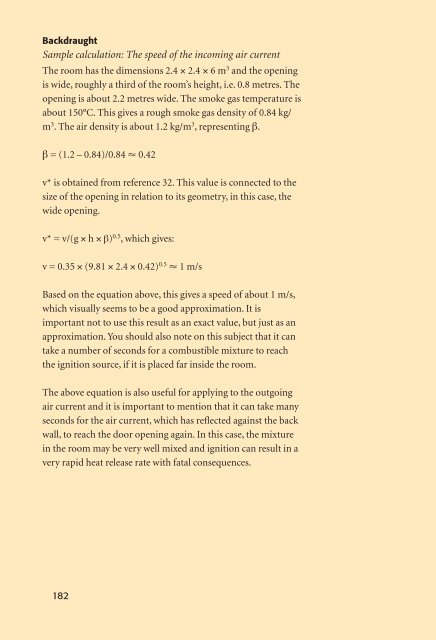You also want an ePaper? Increase the reach of your titles
YUMPU automatically turns print PDFs into web optimized ePapers that Google loves.
Backdraught<br />
Sample calculation: The speed of the incoming air current<br />
The room has the dimensions 2.4 × 2.4 × 6 m 3 and the opening<br />
is wide, roughly a third of the room’s height, i.e. 0.8 metres. The<br />
opening is about 2.2 metres wide. The smoke gas temperature is<br />
about 150°C. This gives a rough smoke gas density of 0.84 kg/<br />
m 3 . The air density is about 1.2 kg/m 3 , representing b.<br />
b = (1.2 – 0.84)/0.84 u 0.42<br />
v* is obtained from reference 32. This value is connected to the<br />
size of the opening in relation to its geometry, in this case, the<br />
wide opening.<br />
v* = v/(g × h × b) 0.5 , which gives:<br />
v = 0.35 × (9.81 × 2.4 × 0.42) 0.5 u 1 m/s<br />
Based on the equation above, this gives a speed of about 1 m/s,<br />
which visually seems to be a good approximation. It is<br />
important not to use this result as an exact value, but just as an<br />
approximation. You should also note on this subject that it can<br />
take a number of seconds for a combustible mixture to reach<br />
the ignition source, if it is placed far inside the room.<br />
The above equation is also useful for applying to the outgoing<br />
air current and it is important to mention that it can take many<br />
seconds for the air current, which has refl ected against the back<br />
wall, to reach the door opening again. In this case, the mixture<br />
in the room may be very well mixed and ignition can result in a<br />
very rapid heat release rate with fatal consequences.<br />
182

















